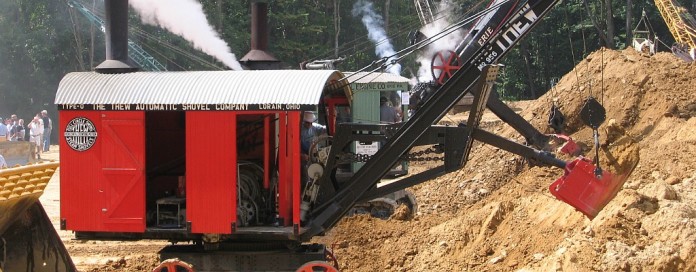Hello, friends of steam out there. There is not much activity in the hobby this time of year. Most equipment is drained and stored for the winter.
Several readers have asked why there have been no columns recently, so here’s why. I missed the fall shows at Portersville and Saegertown completely as I was in the hospital setting up for dialysis, which is now a three-day-a week treatment regimen. Minimal symptoms, but a short leash and some tiredness. It has been a new experience, to say the least, especially how it affects my mind and thinking processes.
Looking ahead
Plans and paperwork for 2016 are underway among the various club boards of directors. Also several building projects are underway, according to newsletter reports. Some boilers are under repair as usual for the off season, and J.S. Company continues to have a backlog of boilers to build and repair.
R.I.P.
The Grim Reaper has hit us quite hard lately. We have already mentioned Allen Bupp Jr. of Catfish Hollow Toys and his dad Allen Sr., founder member and longtime director. In addition to them, we recently lost Charlie Baird of Beaver Falls. Charlie was perhaps better known nationally as a member of the agricultural toy hall of fame. He had hand built six different model combines that were on display at the funeral home, along with six Oliver tractors and a Farmall parked out front on the grass. They really gave him a nice send-off.
I got a chance to exchange greetings with “Let’s Talk Rusty Iron” columnist Sam Moore at the funeral home. His recent article about the Pontiac tractor was most interesting. It’s a shame none are left to play with, but with an early design and low production can’t be unexpected.
Earlier we lost our main trucker buddy, Jim Lewandowski of New Brighton. Several clubs will miss his contributions and it will take at least a year to sort out all he owned and replace him. His favorite collectible were Crawler tractors, especially Internationals, and also trucks, with which he made his living.
Think small
This is also the season for model train displays and several are running. Railroad steam was a major use of the power type and remains of grades and tracks are to be found everywhere, and are well documented in now some 14 or 15 volumes of Wayne Cole’s Ghost Rails series.
Among the interesting sidelights of railroad lore are the nicknames. The Sheffield and Tionesta logging road in northwest Pennsylvania was sometimes called The Swift and Terrible and other times as The Slow and Tedious. Maine’s Bangor and Aroostook was “Busted and Still Running.” The Hoosac Tunnel and Wilmington in New England was famous for the early use of dynamite in boring the tunnel and was nicknamed the Hoot Toot and Whistle. Many others crop up frequently.
I was also noting the history involved in the combined names of some of today’s major railroads. A good example is the BNSF, which is the Burlington, Northern, and Santa Fe. The Burlington was from the Chicago, Burlington and Quincy, one of the major players in the Early Chicago area. The Northern was James J. Hill’s coast-to-coast road called the Great Northern. It was the northernmost of the early transcontinental roads serving the northern tier states between Minneapolis and Seattle. The Santa Fe was originally the Atcheson, Topeka and Santa Fe, towns in Kansas and New Mexico, and well known from the song back in the 1940s. Many other songs have also featured trains.
Rode to town
I was most familiar with Baltimore and Ohio trains back in the steam days. I often rode to town with my dad rather than ride the school bus, as the walk from the store where he worked was only a couple of blocks.
The morning down train from New Castle often stopped just short of the fourth street crossing and shifted off a few cars to the local steel mill, and sometimes picked up a car or two. When they hooked back on to train and pumped up the air for the brakes, the start off was quite a sight. I suppose the boiler pressure was about two hundred PSI. When the exhaust blasted out of the stack, it shook the power lines over the crossing quite violently. Sand was often applied for better traction. It was often necessary to jam the cars back before going ahead to take advantage of the bit of slack between cars.
Alas, when I went away to college, steam power disappeared and I was very disappointed when I came home. We are fortunate to have a number of preserved Steamers here and there on railroads, as well as our favorite traction engines. So it’s great to have the memories and pictures.
Cooking with steam
Being of English background, I am also familiar with cooking over steam. Most recipes call for steaming over boiling water for three hours. Many food can be prepared this way and two of my favorites are the family suet pudding and apple dumplings. I just took a pudding off a few minutes ago and so my kitchen smells nice and spicy. My grandmas on both sides of the house spoke of putting a pudding into a muslin cloth and floating it in boiling water. A few years ago, I ran across a mold that gives my pudding a classic form. I’m sure it doesn’t taste any better, but it makes a nice appearance. My Aunt Polly had a deep cooker on her electric stove and it had tight compartments that she used sometimes for the pudding. I have a couple different recipes and I’m sure there are dozens of variations. Anyone else have one?













